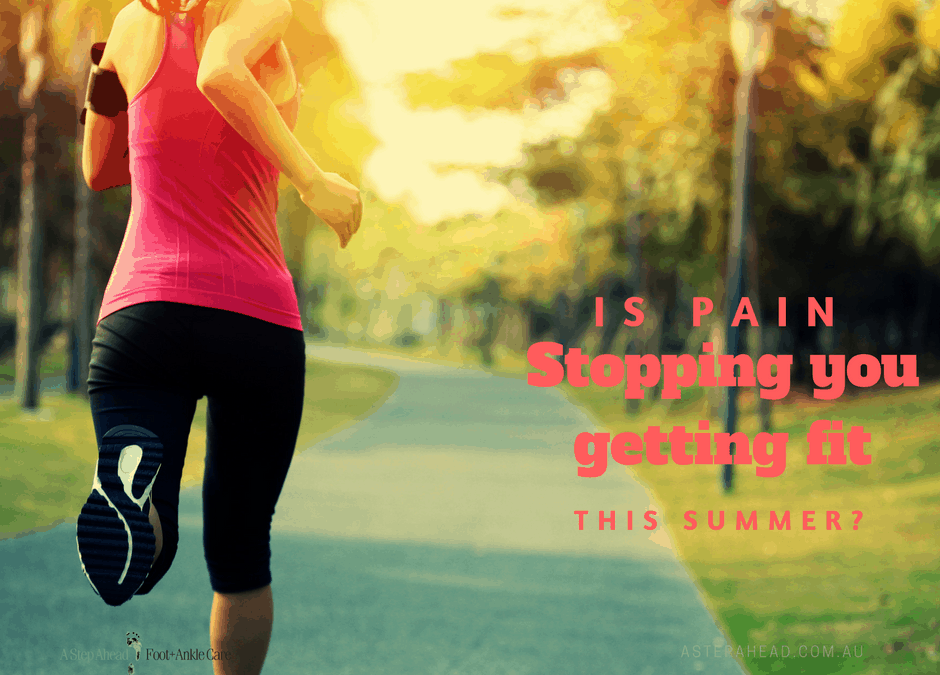
Blog, Heel Pain, Shockwave, Sports Care
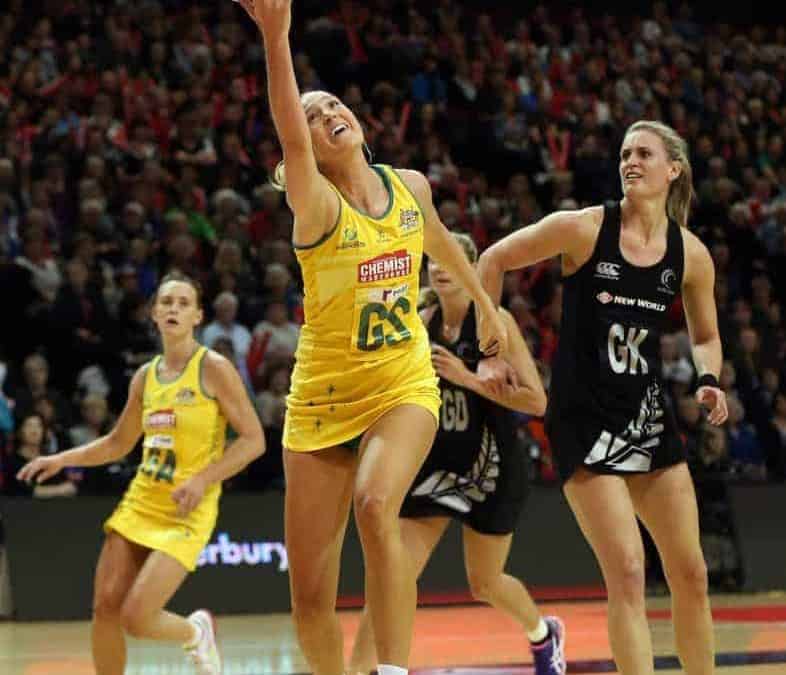
Blog
Hi guys, back again to chat about rehab and even more importantly PREHAB, and we will stick to our netball theme in light of the Diamonds stunning World Cup Victory last weekend.

2015 World Netball Cup
Allphones Arena
Gold Medal Game
Preventing injuries is of massive importance as it link directly to enjoyment of sport, and optimum performance. Lets face it, we all want to get around the court like Paige Hadley or shoot like Caitlin Basset right? Sitting on the sidelines nursing an injury takes you away from the sport you love, and away from the eyes of coaches and selectors alike.
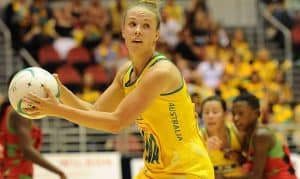
Quite often we see resources that don’t address the specific factors that will minimise the risk of injury to our netballers! Our A Step Ahead NetballSmart blog aims to overcome this by giving you guys a simple to understand, point by point action plan for injury prevention.
Warming Up and Stretching
Preparing the body for participation in sports by warming up, will enhance the maximal performance and reduce the risk of injury! Its a sentence i often find myself repeating over and over again to my young patients. The Netball World Cup was a great example for us as a practice, with the public being able to see first hand the amount of time the best teams in the world spend on warming up before games.
Warming up improves blood flow to the heart, increases the muscle temperature and makes muscles more pliable.
Cold or less pliable or elastic muscle works harder to accommodate a given load and will be more resistant to sudden stretch. Less pliable muscle tissue is also more susceptible to overuse injuries.
Below we have come up with a simple to understand table to break down the different stages of warming up.
|
Component
|
Purpose
|
Example for Netball
|
|
Aerobic Exercise
|
Increase Body Temperature
|
2-3 Light Jogging the width of the court
|
|
Stretching
|
Increase Elasticity of Tissue
Increase Joint Range of Motion
|
Dynamic Stretches for Leg Muscles
(see examples below)
|
|
Sport Specific Exercises
|
Prepare the body for the type of activity expected
|
Short Sprinting
Changes of Direction
Passing and Shooting drills
|
Right, so now we have established our table, what does it all mean? Well, basically, the first column (component) is the breakdown of a typical warm up routine you can use before your saturday games. Once we have established we need to break our warm down into three different parts, and you want to skip the detail, we can look across the table to the examples.
First we start with a jog across the width of the court 2-3 times. We can then move into some dynamic stretches for the major legs muscles you will use for the game.
A good start is to warm up the Calf muscles, which are the big muscles at the back of the lower leg and then upwards to the Hamstring muscles. If you don’t know much about Dynamic stretching, see our short description below!
Dynamic stretching WARMING UP PRE EXERCISE
Dynamic stretches differ from the norm in that they stretch the body through movement. Instead of putting your body into a stretched position and keeping it there as the muscles relax gradually, you move quickly into and out of a position that stretches your muscles.
Dynamic Calf stretches:
Get yourself into a classic push up position. Then, hike your hips towards the ceiling or sky creating a V position with your body. Keep your back as straight as possible.
Place one foot over the back of the other ankle, and slowly but actively push your heel into the ground. Then, push your ankle upwards going up onto your toes.
Perform three sets of 10 repetitions per stretch for improved calf movement and flexibility.
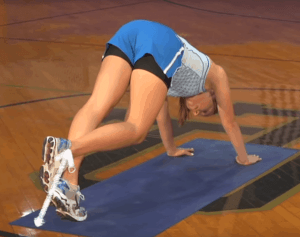
Dynamic hamstring swings:
A two-part dynamic stretch for the hip flexors, hip extensors, hip adductors, and hip abductors
This involves gentle swings of the leg forwards and backwards gradually getting higher and higher each time. Around 10 to 15 swings on each leg should be enough.
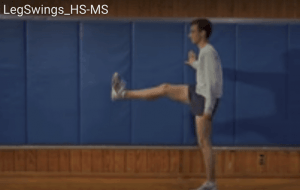
We then want to move into some sort of sport specific movement, something that you will be doing regularly on the court.
We had the absolute privilege of watching the Diamonds take on Jamaica during pool play of the World cup thanks to Asics Australia. It was really interesting to watch the girls going through there physical and sport specific warm ups. These are generally done as a team, so your coach will want to have some input here.
I hope this blog has been informative, without being over the top with mumbo jumbo you don’t need. That’s always the aim, to try and get the important information out there as efficiently as possible!
My next blog will be up shortly regarding cooling down and some specific things you can do! Stay tuned for more editions of the A Step Ahead NetballSmart blog!
Aneesh Kesha
Part of the A Step Ahead Foot and Ankle care team

Blog
DeFEET your HEEL PAIN!
1. If it HURTS, stop doing it! Pain is actually your body’s way of telling you that something is wrong – listen to it! Putting pressure on a (painful) damaged muscle/tissue/bone = further damage = no improvement = ongoing pain. It’s as simple as that.
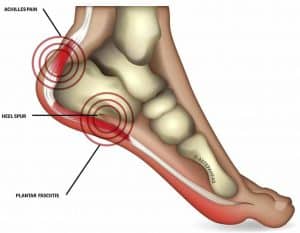
2. Nothing will change unless YOU change it. You’ve been wearing the same shoes and trying the same stretches and whatever else google has advised you since your pain started and you’re still in pain. Consult a practitioner that specialises in heel pain – not all podiatrists and practitioners do! Look for a practice with a proven track record with heel pain – different practitioners do things very differently and get very different results!
3. STICK to the plan! “It’s only when people venture off the main path in the forest that they get lost and chased through the forest in the night.” As practitioners we don’t tell you things to try and make your life difficult and play ‘let’s test if anyone will actually do this’. We do this because we KNOW it works and see it working all day every day, for those who stick to it. If we could make it easier, we would! But taking shortcuts hasn’t produced good results for our patients, and you came to us to get you pain-free.
4. Understand what is happening! Make sure you completely understand: what your condition is, what causes it, what aggravates it, WHY you are having the treatment you are and what the treatment is actually doing to and for your feet. If you don’t see a purpose to doing something, you are a lot less likely to stick to it. Not being fully informed about your condition can create uncertainty about your treatment. Ask all the questions, ask them as many times as you need, and let your practitioner help you to understand. If you get a generic answer along the lines of “It’s plantar fasciitis and you need these very hard orthotics” – Our number will be at the bottom!
5. Finally, DON’T give up! Whether you’ve just started your journey to being pain-free or have tried multiple options from different practitioners with no success, very seriously, don’t give up! We are often people 3 or 4th opinion – some have been to physiotherapists, specialists, GP’s and other podiatrists – if they haven’t had success with you, sadly you’re not alone! I have the privilege of seeing the pain levels of my patients decreasing every week until the pain is gone. Every foot is different, the causes of heel pain are different, and when this is correctly analysed, diagnosed and treated, amazing things can happen. Our treatment is VERY different!
These are my top 5 because I see these so often! It’s actually fairly unusual to see anyone who isn’t struggling with at least one of these points. But rest assured – heel pain can be defeated, you don’t have to keep battling it and letting it limit your activity and you can be completely pain-free. We have patients who regularly travel from all across Sydney NSW and even interstate to see us! Its not unusual for us to be the last of a long line of other practitioners you may have seen. Come and join our ever-growing team of pain-free patients – we’d love to help you too!
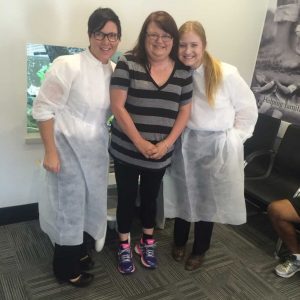
Dr Nina to the right and Shendi on the left with our patient Kimberley who beat heel pain!
A Step Ahead Foot + Ankle care
Penrith, St Marys
and soon to come to a suburb near you!

Blog
- Needing a pair of orthotics?
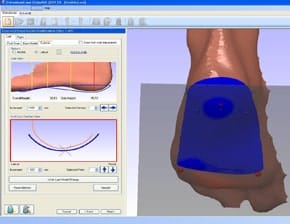
- Heard mixed messages on how effective they are?
- Aren’t they all the same anyway?
If you’ve ever even CONTEMPLATED getting orthotics – read this first!
Let me start by answering a question that goes through almost all of my patients minds at some point – nope, orthotics are definitely NOT all the same and when the right orthotic is properly designed for my patients foot using the right materials and design skills that come from years of experience (and very honestly, learning from previous mistakes that others are still making today), yes they ABSOLUTELY do alleviate foot, ankle and low-er limb pain.
In fact, orthotics couldn’t be more different – and in many ways, they should be! Let me explain while answering a few concerns I often hear:
- Are my orthotics going to be like my pair from my previous podiatrist?
- I know someone that has had orthotics before but they didn’t help him?
- What do orthotics actually do?
Let me start in answering these with the first and most important point:
The way your orthotics look and how effective they are are dependent entirely on the skills and preferences of your podiatrist! Yes – your specific podiatrist alone dictates how they are made and using the resources, materials and skills they have available at any point in time. If your podiatrist wants to heat-mold a pre-made, soft, thin orthotic and add a colourful harder piece and call that a custom-made orthotic, then that’s what you get. If you get plaster-cast and the cast gets sent to Canada for a firm, plastic-like device to come back, then that’s the orthotic you get.
What does this mean? Simply and unfortunately put, you may receive a lower quality product (often associated with a cheaper price) that claims to do the same thing, but often fails to produce the same results (pain relief!) and tends to have a shorter shelf-life. Think of it as buying make-up (clearly, this is written from a female perspective). You’re after a lipstick. Sure, you can buy an $8 lipstick from pretty much anywhere, but we know it will never compare to buying a Mac lipstick, that you’ll love and keep using until the very very end.
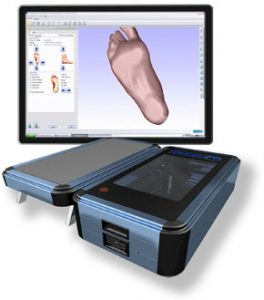
So how do I know if my orthotics will be good? Don’t be afraid to ask! They should be more than happy to talk you through the process – I LOVE talking through our orthotic design and manufacture – from the extensive testing of the range of motion of your foot and ankle joints to muscle strength, foot posture index, video gait analysis and 3D laser scanning your foot! But that’s only the part you see – it all then collides when our principal podiatrist and founder, Brenden Brown, designs every single one of our patients orthotics (yes, over all of our clinics!) himself, using his 20 years of experience and the widest range of materials I’ve ever seen as a podiatrist. BUT THEN, our CAD/CAM milling machine actually mills out the base of your orthotic, all in our VERY OWN (and very exciting!) orthotic lab, and hand finished by our orthotic technicians! It’s safe to say that it’s a little more technical than sticking two bits of material together and naming it an orthotic, and FAR more effective.
Finally, think about what your orthotics do! Orthotics have a FUNCTIONAL purpose to alter the alignment of your foot, changing different pressures and strains over your muscles, bones, joints and exactly where you’re having your pain. They address the CAUSE of your lower limb problems to provide you with long-term relief, and when designed and created right, they do this VERY well.
Happy orthotic hunting!
Dr Nina Lansdowne
Podiatrist and Superstar Blog writer
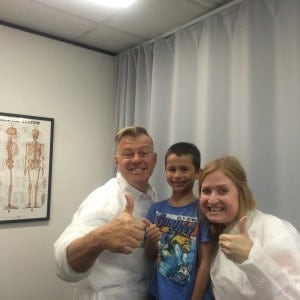
Dr Nina , BB and a good looker who happens to be our patient!
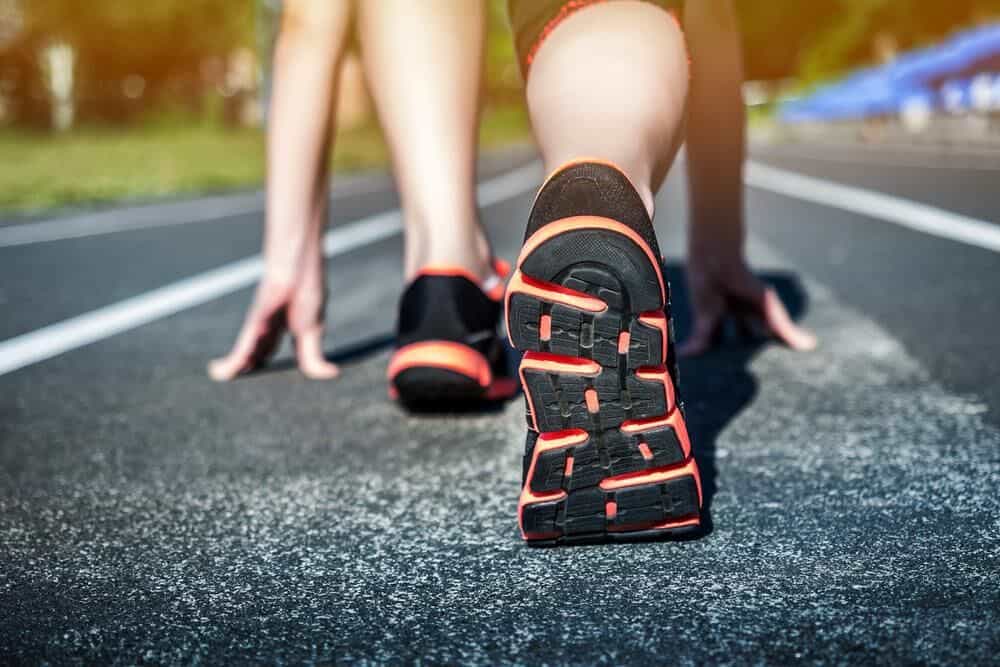
Blog
“Ok so I went to the guys down the road.” Say Lee my Triathlon loving patient says to me. “It’s just really sore here under my second toe, they said it was a Neuroma but they have been trying to fix this for weeks, no months and it’s just not getting better” !
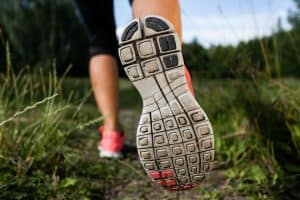
Callous on my foot, Numb toes and this V developing – A runners trifecta!
The pain that Lee was chatting about was not a surprise to me and nor what I noticed on her foot. She had developed a small V between her 2nd and 3rd toe, had pain under the ball of her foot and had developed a small amount of callous around the same area. Yup I’d seen this many times before!
If she wore tight shoes, high heels or bike shoes in her case she found the pain got worse. If she ran a lot while it may have got numb for a while at the end of the race it got sore! Over time she noticed the split or V sign getting worse.
On seeing this her GP suggested Metatarsalgia, which for years has been a reasonable diagnosis and what most would suggest this may be, However it’s NOT. The “other guys down the road” AKA another group of Podiatrist, had diagnosed a Morton’s Neuroma, again this is a common misdiagnosis. Often radiologists will under ultrasound call this a Neuroma because these two conditions can look strikingly similar. The scan or ultrasound the Radiologist undertakes is only as good as the information provided to them though your diagnosis in the clinic get it wrong and so will they!
After a bit of pushing and prodding, and watching Lee walk again on our Video walk / run analysis equipment I was now sure what we had BUT I wanted to get another set of eyes to have a look so off she was sent to see a particular radiologist we use all the time. He sees our patients very specifically because he is overly experienced in looking at FEET!
On the report there it was “A plantar plate disruption between the 2nd an 3rd Metatarsal heads.”
So we started Lee on a series of Deep connective tissue massages with our Podiatrist, renewed her orthotic insoles and arranged for her to get some new trainers on our advice.
6 weeks later and BOOM Lee was about to start running again! “I won’t be going elsewhere again” she said and this time I believe her!

BB’s looking super clever in Bright red Red Foo frames! No BB doesn’t wear glasses!
Brenden (AKA BB)
A Step Ahead Foot + Ankle Care


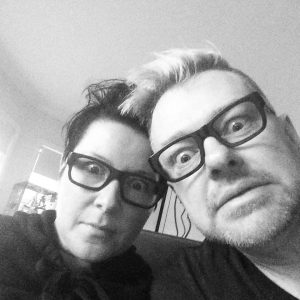
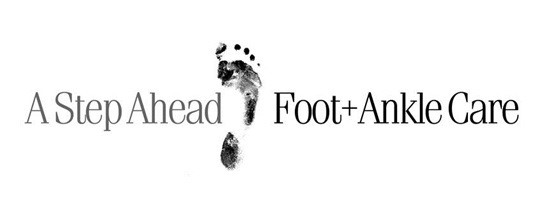
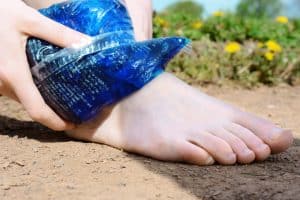




















 Dr Brenden’s White paper report on the “6 Reasons You Won’t Beat Heal Pain” outlines what’s stopping you from beating this and tips on how to stop it in its tracks!
Dr Brenden’s White paper report on the “6 Reasons You Won’t Beat Heal Pain” outlines what’s stopping you from beating this and tips on how to stop it in its tracks!